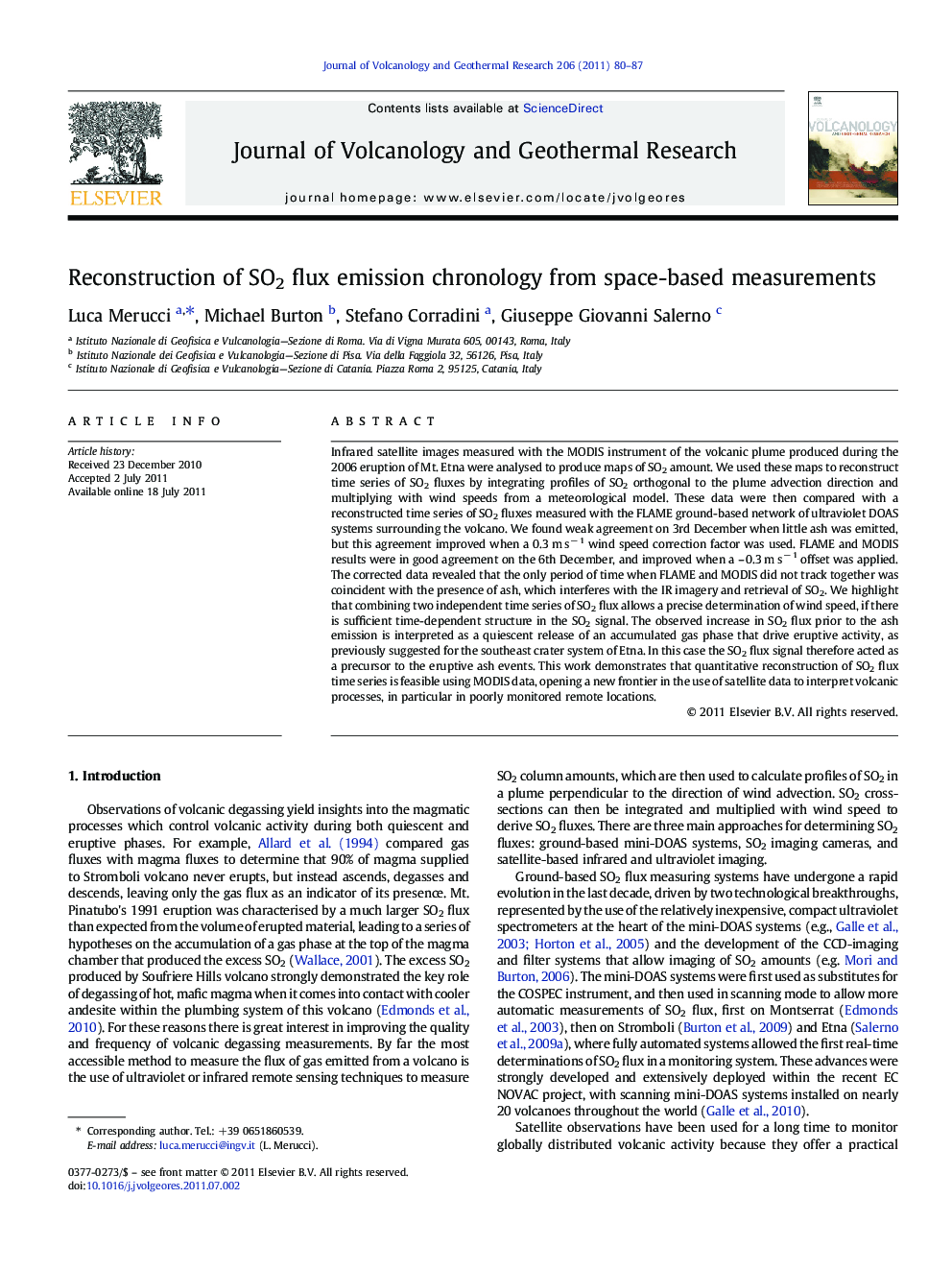| کد مقاله | کد نشریه | سال انتشار | مقاله انگلیسی | نسخه تمام متن |
|---|---|---|---|---|
| 4712781 | 1638397 | 2011 | 8 صفحه PDF | دانلود رایگان |

Infrared satellite images measured with the MODIS instrument of the volcanic plume produced during the 2006 eruption of Mt. Etna were analysed to produce maps of SO2 amount. We used these maps to reconstruct time series of SO2 fluxes by integrating profiles of SO2 orthogonal to the plume advection direction and multiplying with wind speeds from a meteorological model. These data were then compared with a reconstructed time series of SO2 fluxes measured with the FLAME ground-based network of ultraviolet DOAS systems surrounding the volcano. We found weak agreement on 3rd December when little ash was emitted, but this agreement improved when a 0.3 m s− 1 wind speed correction factor was used. FLAME and MODIS results were in good agreement on the 6th December, and improved when a – 0.3 m s− 1 offset was applied. The corrected data revealed that the only period of time when FLAME and MODIS did not track together was coincident with the presence of ash, which interferes with the IR imagery and retrieval of SO2. We highlight that combining two independent time series of SO2 flux allows a precise determination of wind speed, if there is sufficient time-dependent structure in the SO2 signal. The observed increase in SO2 flux prior to the ash emission is interpreted as a quiescent release of an accumulated gas phase that drive eruptive activity, as previously suggested for the southeast crater system of Etna. In this case the SO2 flux signal therefore acted as a precursor to the eruptive ash events. This work demonstrates that quantitative reconstruction of SO2 flux time series is feasible using MODIS data, opening a new frontier in the use of satellite data to interpret volcanic processes, in particular in poorly monitored remote locations.
► Flux time series reconstruction from space-based data valuable for remote volcanoes.
► SO2 and ash flux time series reconstruction from TIR multispectral satellite images.
► UV ground- and IR space-based SO2 volcanic plume retrievals comparison.
► MODIS SO2 and ash time series allow investigation of short term volcanic processes.
► Eruption driven by accumulated gas phase percolated through conduit permeable magma.
Journal: Journal of Volcanology and Geothermal Research - Volume 206, Issues 3–4, 15 September 2011, Pages 80–87